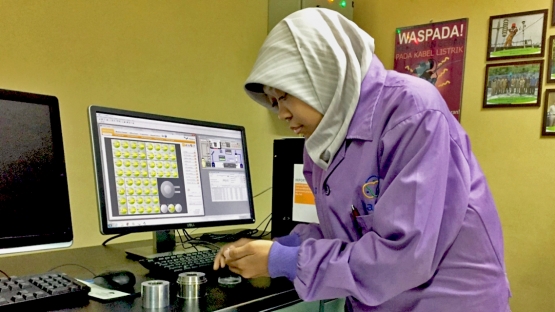Each year, World Environment Day is celebrated on 5 June to encourage action, to promote awareness and to organize events for the protection of our environment. Rallying international efforts under the theme ‘Beat Air Pollution,’ this year’s World Environment Day will emphasize the importance of measuring and protecting air quality, as an important contribution to human and economic development. The IAEA helps Member States to apply nuclear techniques in a wide range of environmental areas, including air quality monitoring.
The quality of the air we breathe is closely linked with the quality, and indeed the length, of our lives. Exposure to ambient air pollution is responsible for 4.2 million deaths each year, with another 3.8 million occurring as a result of household exposure to smoke from cooking stoves and fuels, according to the World Health Organization. The Sustainable Development Agenda’s third Goal includes a target on reducing the number of deaths and illnesses from air pollution and contamination by 2030.
In keeping with its mandate to promote and expand the contribution of nuclear science and technology to development, the IAEA works with environmental scientists, nuclear physicists and Member State decision-makers around the world to develop and implement new isotopic and nuclear techniques for the protection of the environment. These techniques include the study of ice cores to understand historic changes in pollution levels, and the use of isotopes to identify current sources of pollution and to predict the movement of pollutants worldwide—the data produced by these techniques all contribute to efforts to improve and ensure air quality.
Often implemented through its technical cooperation (TC) programme with the support of its Environment Laboratories, recent achievements realized by the IAEA include:
- An e-learning course was launched in 2018 to support the use of neutron activation by scientists in 40 countries. Neutron activation is a highly sensitive technique that allows researchers to test and measure indoor air quality by identifying pollutants and their origin;
- An ongoing regional project in the Africa region has organized four training courses to strengthen capacities for systematic air pollution monitoring between 2017 and 2019. The first two courses—held Morocco and Ghana—established the fundamental strategies for pollution management, while the latter two events—organized in Austria and Egypt—explored the laboratory-level skills required to measure and monitor pollutants. A final coordination meeting was held ahead of the project’s official closure;
- The Viet Nam Atomic Energy Institute (VINATOM) was designated as a Collaborating Centre in November 2018 by the Agency’s Department of Nuclear Sciences and Applications. Under the terms of their agreement, the IAEA and VINATOM will collaborate closely to conduct, apply and deploy research in the areas of air quality assessment and monitoring.
- In October 2017, following their use of particle-induced x-ray emission and X-ray fluorescence technology, Indonesia’s third largest city was awarded the title of ASEAN Environmentally Sustainable City. Located in West Java, the city of Bandung has been deploying these techniques since the late 1990s to measure particulate matter in the city’s air on a regular basis.
Most air pollution is caused by industrial, agricultural or other anthropogenic activities. However, some pollutants occur naturally—radon, for instance, is a radioactive gas which is produced in uranium ores and diffuses into the atmosphere. For most people, radon is the largest source of radiation exposure throughout their lifetime.
The IAEA recently hosted a 90-minute webinar to support the dissemination of policies to prevent and mitigate indoor radon exposure and to promote awareness for the issue. Available here, the web-based seminar clarified how to test building materials for the presence of natural radionuclides, explored best practices in construction and reminded participants of the principles of radon mitigation.





